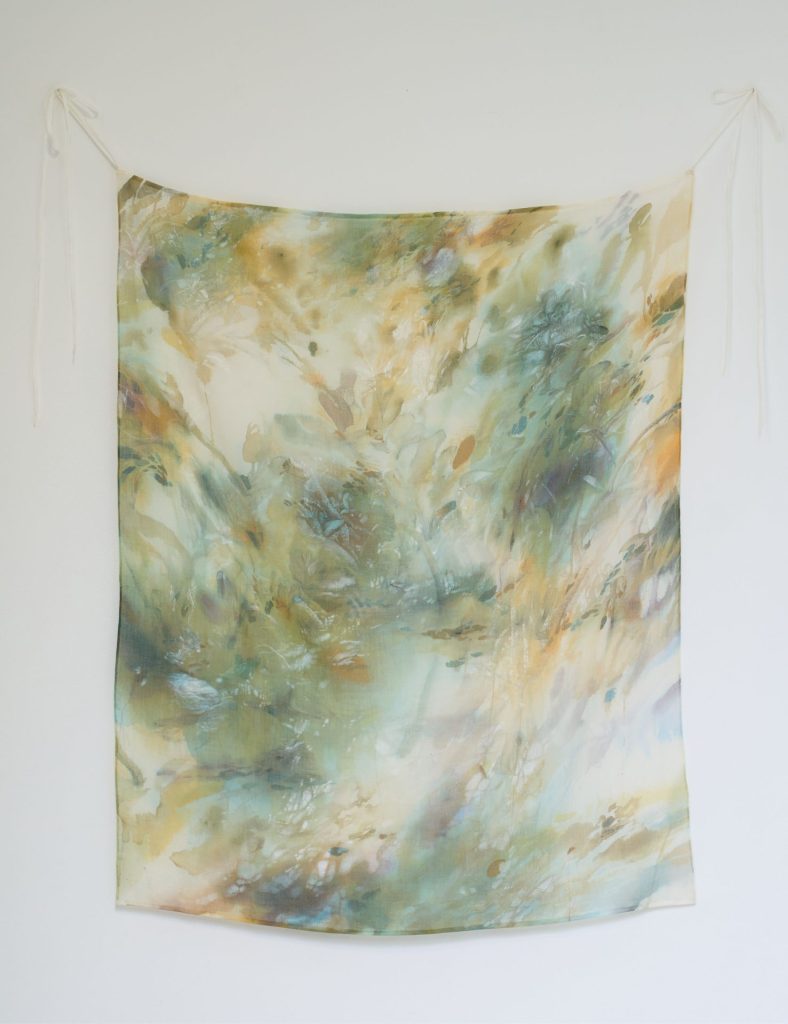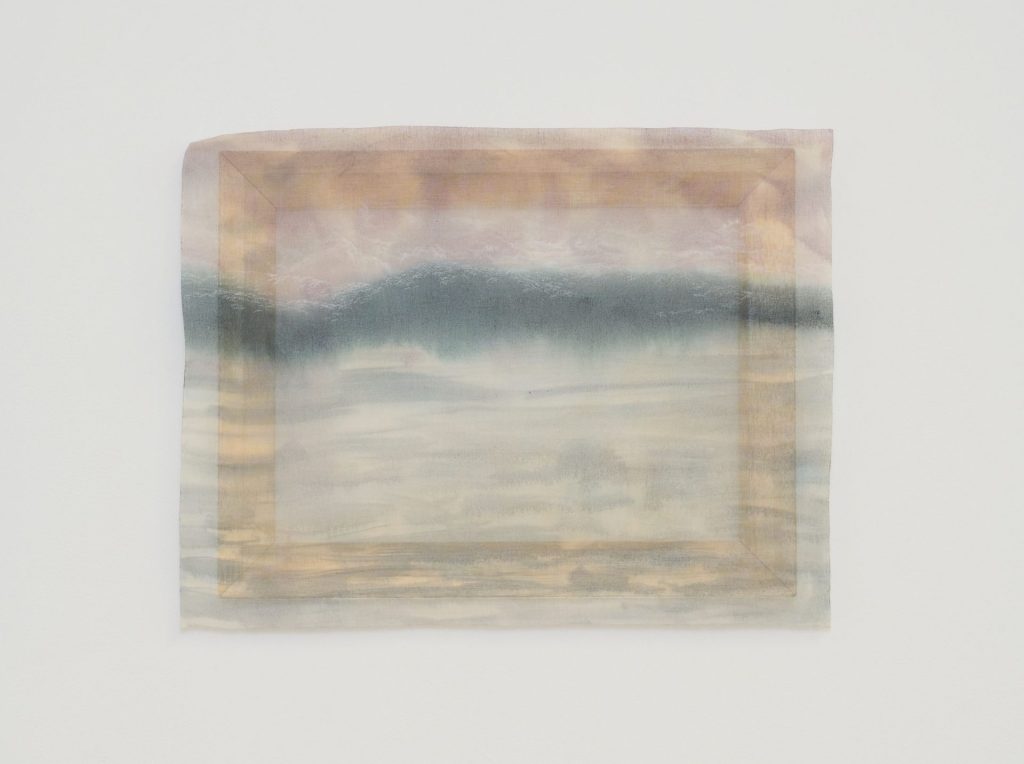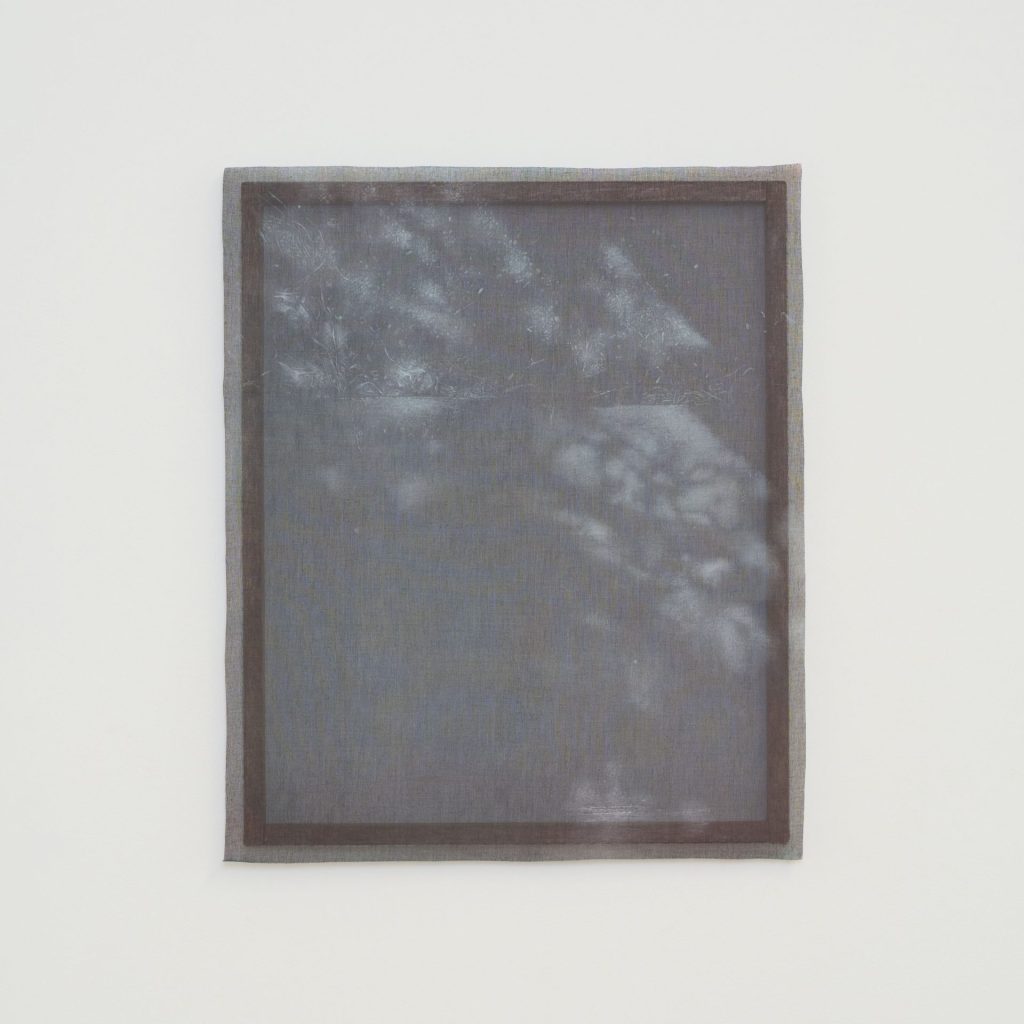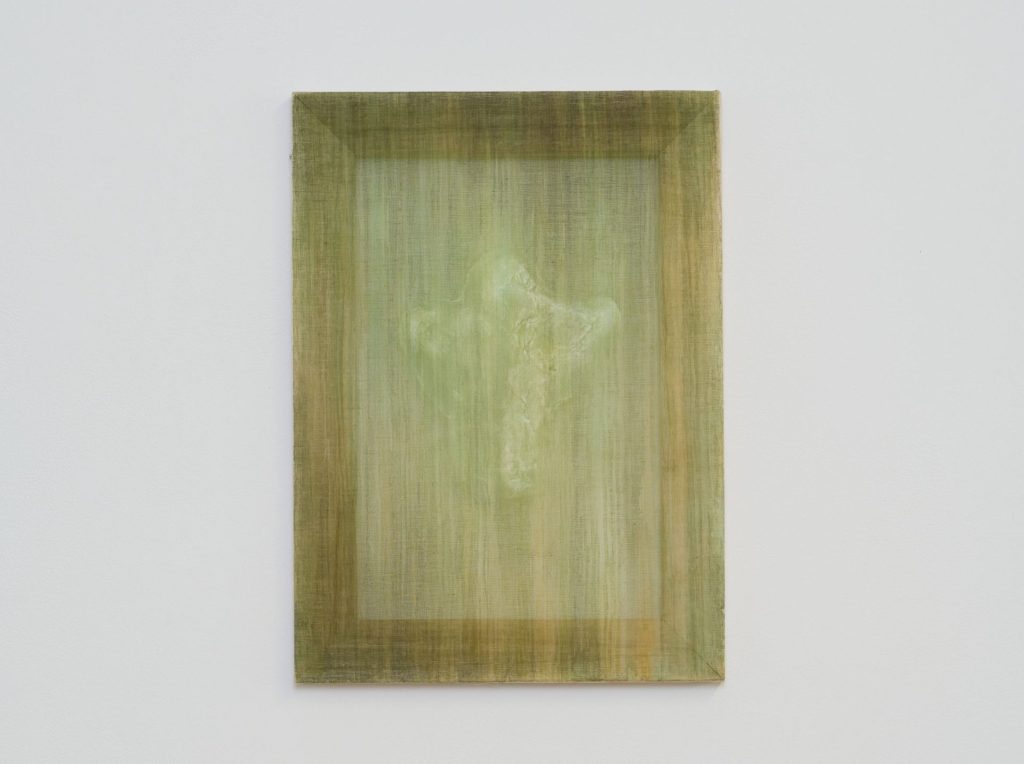EXHIBITIONS
Moe Kimura“Tracing the Brackish Water”
- Information
- Works
- DATE
- 2024-08-23 [Fri] - 2024-09-21 [Sat]
- OPEN TIME
- 11:00-18:00[Tue-Sat]
- CLOSE DAY
- Sun, Mon, National holidays

LOKO GALLERY is pleased to present Moe Kimura’s solo exhibition “Tracing the Brackish Water” followed by her previous exhibition “Garden of Dough” in 2021.
Kimura’s works focus on adapting watercolor or acrylic paint on thin cloths by applying silk paint technique she studied at Vietnam.
In “Garden of Dough”, fragments of wire and wood appeared in her paintings as nameless, undefinable subjects resembling something different. While the depicted images almost dissolve into the transparent cloth, it is solidly captured through viewer’s sight.
In this exhibition, some paintings show motifs seeming to be waterside landscapes. They soak into the transparent cloths and create depth upon them to entice the viewers.
“ On the left is a gently sloping mountain, and on the right is a beautiful sea. As I walk along the road for a while, I come to a large bridge. Then I arrive at a brackish water area, where the river that came down the mountain flows into the sea.
Mangrove trees grow along both sides of the river, and snaking forms crisscross low in the mud. Looking further outside the mangrove forest, taller trees begin to line from a certain point. A line is drawn on both sides of the river, dividing the mangroves growing in salty soil and the tall trees growing where seawater cannot reach.
Then I begin to imagine. The earth gradually loses moisture from mud and turns into dry soil. The river width changes with the tides. Seawater flows back up the river and mixes with freshwater, constantly changing its salinity.
Moe Kimura ”
The Sound When Two Sides Meet
江南春/杜牧
千里鶯啼緑映紅 千里鶯啼いて緑紅に映ず
水村山郭酒旗風 水村山郭酒旗の風
南朝四百八十寺 南朝四百八十寺
多少楼台煙雨中 多少の楼台煙雨の中
Spring in the South / Du Mu
Orioles are heard singing for a thousand li with red flowers among the green;
In waterside villages and mountain towns wineshop flags flapping in the wind are seen.
Of the four hundred and eighty temples built during the Southern Dynasties,
Behold! So many pagodas now still stand in the misty rain as a spring scene.
–From Masterpieces of Classical Chinese Poetry, Translated by Takushi Higashiyama
Wineshop flags raised to notice people its location is referenced in numerous Chinese poetry like the quoted piece above or as a motif of shan shui landscape drawings. Is it just a coincidence how the wineshop flag flapping at the end of the thin bending pole resembles Moe Kimura’s paintings? The way it flutters in the wind gives us a dreamy feel, while the image of the wineshop flag softens it and reminisces the landscape of the misty village that Chinese poets must have cherished. Even when I look at the painting sewn into the wooden frame, I feel as if I am being drawn into it by the faint mountain range visible in the distance.
Kimura paints on a thin cotton cloth by glazing, a technique to layer white and other colors in turns. Through this process a white motif vaguely rises from the layer of colors. Her drawings are reminiscent of drawings by white chalk on colored paper mixed with pigment powder which were numerously left behind by artists from 16th century onwards, such as Dürer. However, in Kimura’s case, she does not prime the surface nor finish the back of the canvas but leaves it transparent. Such delicate drawing makes it difficult to bring out the shading of the motif and is unsuitable for emphasizing depth and dimensionality. Therefore, the motifs she depicts are very close to shadows. Viewers recognize the white shadow on the cloth only when it hangs and is swayed in the air, letting the white shimmer.
Several works show mangrove trees of Ishigaki Island. Growing from the bottom of brackish water, these trees reveal their thick roots in a cage-like form when the tide goes out. These sturdy jungles serve as a habitat for small fish to protect themselves from predators. The boundary between freshwater and saltwater is not linear but an aspect of an ecosystem. A distinctive ecosystem is formed by the mangrove roots which grows upon the brackish water.
As an example of “inframince,” a cliché initially jot down by Duchamp, the artist himself gives the rustling sound of velvet pantaloons. If one were to translate it, it would be more appropriate to say “threshold of consciousness” which refers to the boundary between objects or perceptions, rather than describing the thinness of the object. Like a sound of two hands clapping, it disappears the moment it appears. Kimura’s half-transparent paintings are the boundaries where both sides of the cloths come into contact. The white image appears and disappears at the pellicle of this world and the other world.
Yasui Mihiro
Study of book history, Art Critic
Part-time lecturer of Aichi Medical, University and Tokoha University
ARTIST PROFILE: Moe KIMURA















